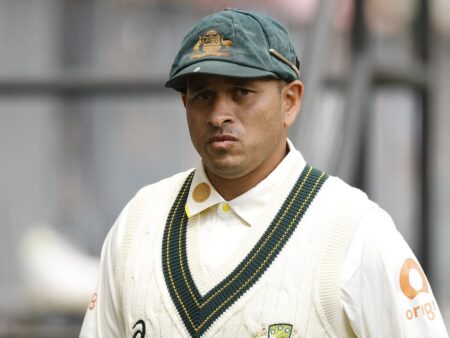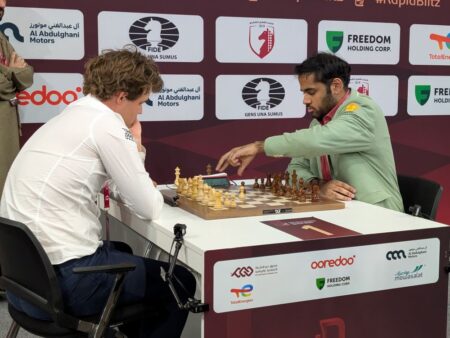In a crucial Group A match of the Champions Trophy 2025, Matt Henry’s exceptional bowling performance, taking 5 wickets for 42 runs, helped New Zealand limit India to a score of 249. The game was played at the Dubai International Cricket Stadium, known for its slow pitches, prompting India to field four spin bowlers. Both teams, already qualified for the next stage, set the stage for a compelling contest after each dominated different parts of the innings.
New Zealand will be the happier side at the innings break, largely thanks to their impressive bowling start and energetic fielding after winning the coin toss.
Mirroring their previous World Cup semi-final clash in Manchester, India’s top order encountered a significant challenge from Henry. Initially bowling around a good length, Henry adjusted his strategy, pitching fuller to dismiss the in-form Shubman Gill, trapping him LBW. Virat Kohli, fresh from a century, attempted to disrupt Henry’s rhythm, even drawing a short, wide delivery. However, Kohli’s cut shot was brilliantly caught by a diving Glenn Phillips, who might have even surpassed his earlier spectacular catch of Mohammad Rizwan in the tournament. Adding to India’s early woes, captain Rohit Sharma mistimed a pull shot, sending the ball straight to a leaping fielder at mid-wicket.
India found themselves at a precarious 30 for 3. Interestingly, the last instance of India being 3 wickets down for 46 or fewer within the first 15 overs was six years prior, also in a notable match at Old Trafford. Similar to that occasion, the pairing of a left-handed and right-handed batsman offered some stability. Axar Patel, batting at number 5, joined Shreyas Iyer, and together they began to rebuild the innings. Their partnership started cautiously, enduring 51 deliveries without scoring a boundary. At one point, Axar had accumulated just five runs from 24 balls before he powerfully swept Michael Bracewell for a boundary.
Bracewell proved to be the least effective among New Zealand’s spin options, frequently missing his intended lengths. This was partly due to Iyer’s approach, who skillfully stepped forward to Bracewell, creating the impression of advancing down the pitch, only to quickly retreat and execute boundary shots. Iyer also struck three boundaries in an over from William O’Rourke, helping India surpass the 100-run mark in the 25th over. He received solid support from Axar, who adeptly handled New Zealand’s spin attack.
Iyer reached a vital half-century off 75 balls, continuing his consistent performance against New Zealand in ODIs, marking his sixth 50+ score in eight innings. However, echoing the previous game at this venue, batsmen found it challenging to settle on the pitch, and the end of their 98-run partnership proved detrimental for India. Axar was dismissed for 42, caught at short fine-leg after attempting a paddle shot.
Iyer and KL Rahul then formed a rapid partnership for the fifth wicket, but Iyer’s preference for attacking short deliveries led to his dismissal. A third top-edged pull shot found a fielder, concluding his impressive innings at 79. Soon after, Rahul also departed, deceived by a sharp turning delivery from Mitchell Santner that caught his edge en route to the wicketkeeper.
At 182 for 6 in the 40th over, India was in danger of not completing their full 50 overs. However, Hardik Pandya played a crucial innings of 45 down the order, contributing to a 41-run partnership with Jadeja. This promising stand was also broken by Henry, aided by an excellent catch from Kane Williamson, who was fielding at backward point, to dismiss Jadeja. Henry further added two more wickets in the final over, completing his five-wicket haul as India only managed to score eight more runs than Pakistan had previously scored against New Zealand.
Brief Scores: India 249 all out in 50 overs (Shreyas Iyer 79, Hardik Pandya 45; Matt Henry 5-42) versus New Zealand.










